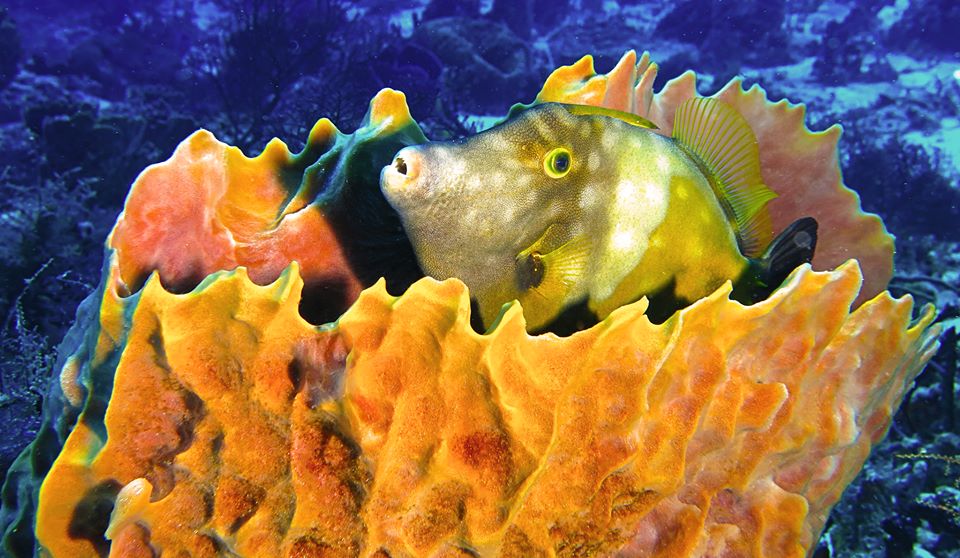The American Whitespotted Filefish (Cantherhines Macrocerus) is one of several varieties of this species you will see on Cozumel’s reefs. You may also find them in Florida and throughout the northwest Caribbean.
They are noticeable for their prominent snouts and bright orange color, which can darken almost instantaneously to near black or lighten and be mottled by white spots depending on their surroundings, emotional state (being threatened), or to make themselves more attractive to a potential mate. Not all girls love flashy men . And they move seemingly effortlessly through the water – usually in pairs – in large part by undulations of their dorsal and pectoral fins.
Adult Whitespotted Filefish grow up to 18-inches long and are usually found in relatively shallow areas around reefs and sponges down to about 80-feet deep. They have scales, although very small, and feel like sandpaper – not dissimilar to a shark’s skin. This roughness is how the Filefish got its name. Reportedly their dried skin was once used to finish wooden boats. It isn’t known how long these fish live in the wild.
Every Filefish has a sharp spine on its head just above its eyes. It erects the spine when threatened as a defensive move. Its primary defense is to erect its dorsal and pectoral fins plus the spine to make it difficult for a predator to eat or to extract from its hiding place if back in a little cave. Juveniles are at risk of being eaten by tuna and dolphinfish. Adults may fall prey to larger fish, lizardfish, and seabirds. Plus they are popular as food or snacks for native Koreans and Chinese.
The Adult Whitespotted Filefish dines primarily on sponges, gorgonians, and algae but will also chow down on hydroids and stinging corals. It is difficult to differentiate between males and females. The male fish are said to have slightly larger appendages extending from their bodies at the base of their tails.
Filefish spawn on the sandy bottom at sites prepared and guarded by males. They breed in groups with one male mating with up to 5 females. Think “Sister Wives fish style. Females deposit their eggs in recessions where they are fertilized by the male. Both parents will guard their nests until the eggs hatch at which time the female takes over caring for her family. And when hatched, the juveniles are pelagic, meaning that they swim freely in open water.

